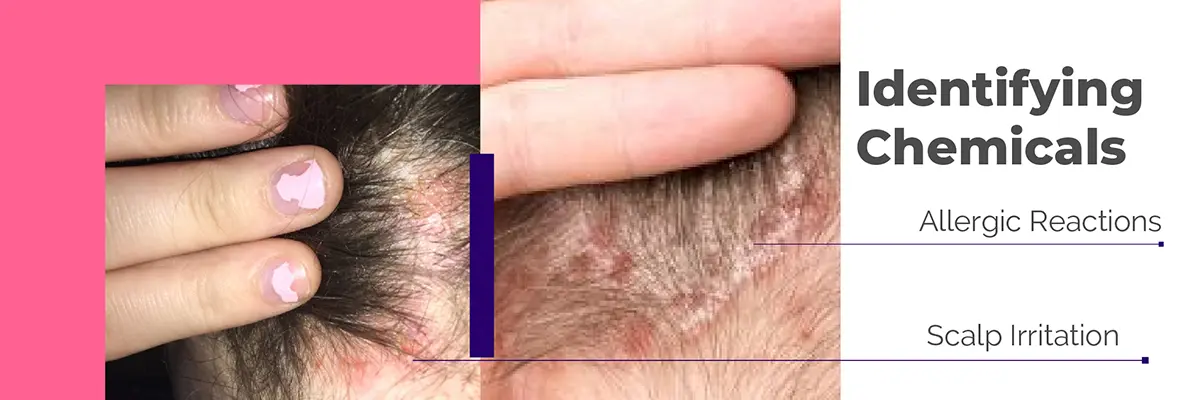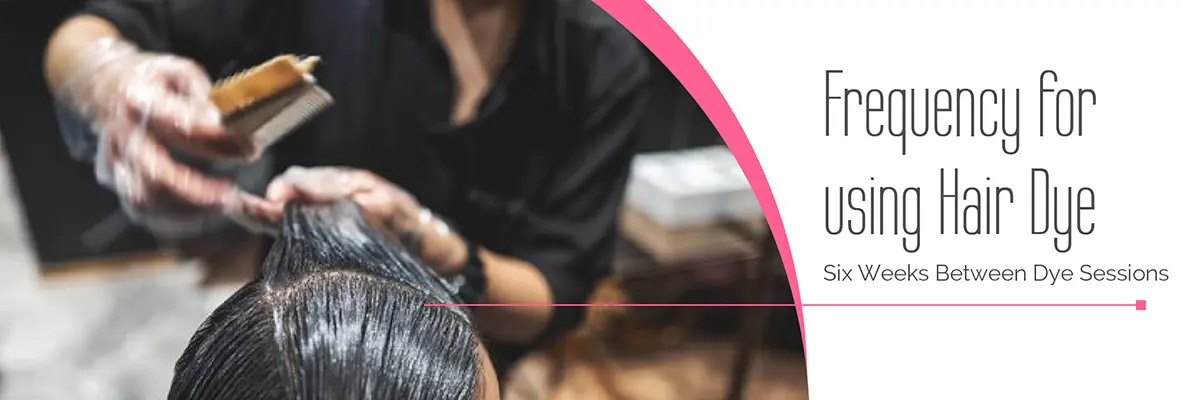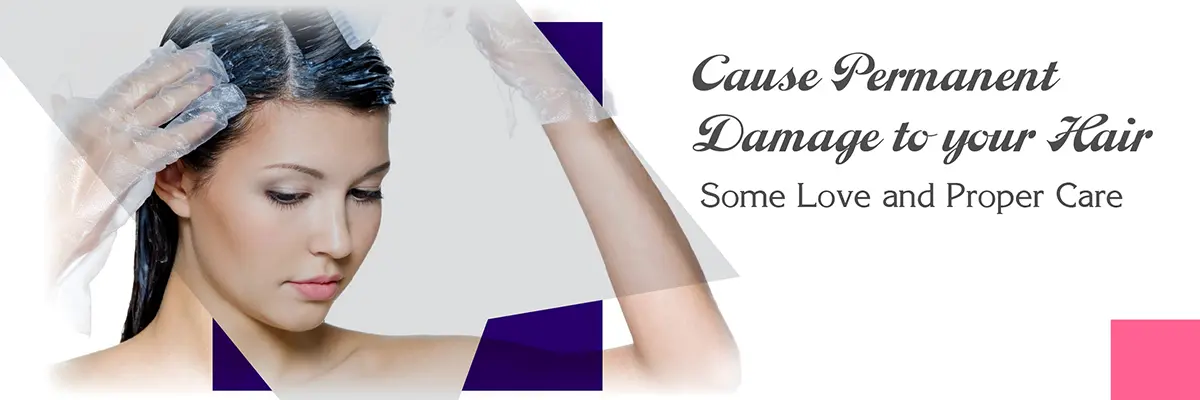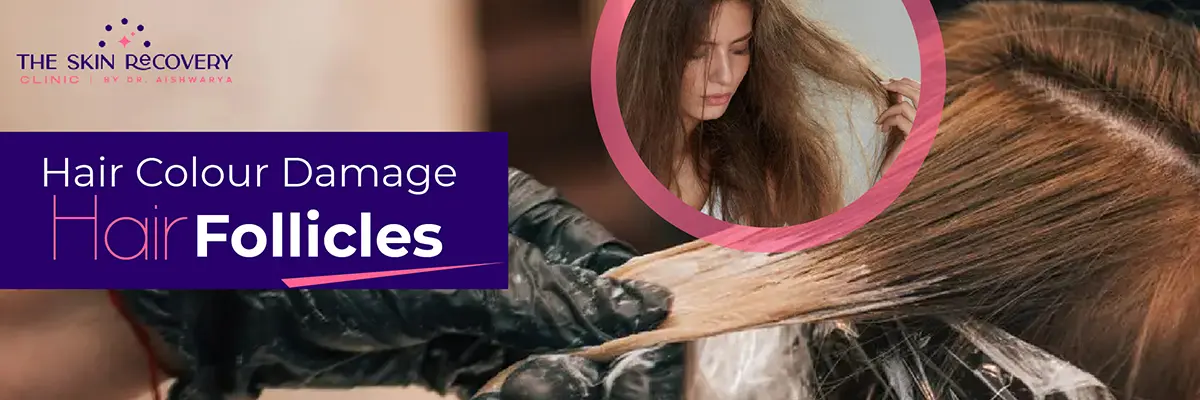Does Hair Color Damage Hair Follicles
No, hair colour doesn't directly damage hair follicles. Hair colour products work outside the hair shaft, altering its colour but not affecting the follicles beneath the scalp. However, excessive use or improper application of hair dye may lead to dryness and breakage, making hair appear damaged. Following instructions, choosing quality products, and avoiding frequent colour changes are crucial to maintaining healthy hair. If you notice any concerns, consult a professional stylist or dermatologist for personalized advice on maintaining your desired hair colour and overall health.
Hair dye works by penetrating the hair shaft and altering the hair's natural colour. The two main types of hair dye are permanent and semi-permanent. Permanent dyes use chemicals to lift the existing colour and deposit new pigments, while semi-permanent dyes only deposit colour without lifting. The key ingredient in most hair dyes is ammonia or its substitutes, which opens the hair cuticle, allowing the colour to penetrate. The dye then reacts with the hair's natural melanin to produce the desired shade.
Is Hair Loss Linked to the Use of Hair Dye?
Using hair dye typically doesn't play tricks on your hair by making it disappear when you follow the instructions. Yet, if you decide to go rogue and leave the dye on for too long or use super strong chemicals, that's when the trouble begins. It's like not sticking to the plan; your hair might get damaged and break. To keep your hair happily on your head where it belongs:
- • Just be a rule follower and choose good-quality dye.
- • Imagine it as giving your hair a VIP treatment, making it feel unique and staying put.
- • So, please stick to the instructions, be kind to your hair, and let the dye work wonders without disappearing acts!
Identifying Chemicals That Can Trigger Allergic Reactions or Scalp Irritation

Chemicals in hair dye, like paraphenylenediamine (PPD), ammonia, and peroxide, can be tricky for some people. They might cause allergies or make your scalp feel a bit grumpy. To avoid any surprise reactions, it's like giving your hair a little test run – put a tiny bit of the dye on a small area and see how your skin feels. If all is good, you're good to go! If you're feeling extra cautious, you can look for dyes that are ammonia-free or have a hypoallergenic tag. These are like the superheroes of dyes, less likely to cause any trouble. So, before giving your hair a new colour, it's a good idea to play it safe, test it out, and make sure your hair stays happy and healthy through the whole colouring adventure!
Is the Safety of Natural Hair Dyes Superior?
If you're thinking about colouring your hair, natural dyes made from plants, like henna, might be a good choice. People say they're safer than regular dyes and like the superheroes of the hair world. They're less likely to cause allergies, but here's the catch – they might not have as many colour choices as the regular dyes, and the colour might not stick around as long. Before diving in, look at the labels because even some "natural" dyes can sneak in additives or preservatives. If you're not sure which way to go, talking to a skin doctor, called a dermatologist, is like having a superhero sidekick. They can help you determine what's best for your hair and ensure it stays happy and healthy. It's like having a superhero team for your hair!
What's the Recommended Frequency for Using Hair Dye?

Deciding how often to colour your hair is like picking your favourite ice cream flavour—it's all about what feels suitable for you and your hair. Most experts suggest waiting around four to six weeks between dye sessions, like giving your hair a little vacation. Overdoing it with the dye can make your hair sad, causing it to become dry, break, and get a bit damaged. If you're into less commitment, you might want to try semi-permanent dyes or those excellent colour-enhancing treatments. They can give your hair a fresh vibe without going overboard on the dye, keeping your hair feeling happy and healthy. So, like finding the perfect scoop, finding the right balance for your hair is the key to sweet success!
When Will Hair Fully Recover from Damage Caused by Hair Dye?
Don't worry if your hair feels under the weather after using hair dye – it can bounce back! Taking care of it is the secret sauce. Treat your hair to regular deep conditioning sessions, avoid using too much heat when styling, and pick sulphate-free shampoos for extra love. Snip off any split ends to stop more damage and let your hair grow naturally. Keeping your hair hydrated by drinking water and eating a balanced diet is like giving it a big hug from the inside. Patience is key here – your hair will thank you with restored health and bounce, showing that a little TLC brings back that happy, healthy glow.
Can Hair Dyes/Colors Cause Permanent Damage to Your Hair?
Hair dye is not a permanent enemy to healthy locks. With some love and proper care, most damage caused by dye can be turned around. Yet, tread lightly – too much use of strong chemicals, like frequent bleaching or excessive peroxide, may steer you into more severe and lasting damage territory. It's a delicate dance between getting that perfect colour and keeping your hair tip-top shape. Seeking advice from a professional and crafting a personalized hair care routine can significantly reduce the risk of permanent damage.
Think of it as finding the sweet spot where your hair looks fantastic and stays healthy. So, consult with a pro, embrace a tailored routine, and watch your hair transform from potentially damaged to brilliantly vibrant, all without the fear of long-lasting harm lingering in the background.
Does Dyeing/Bleaching Hair Lead to Permanent Damage, or Does It Regain Health over Time?

When it comes to dyeing or bleaching hair, temporary damage is a common concern. However, the remarkable resilience of hair allows it to bounce back to a healthy state with the proper care. Responsible use of hair dyes, following recommended guidelines, and adopting a meticulous hair care routine are essential for preventing long-term damage. Prioritizing hair health involves:
- • Incorporating nourishing deep conditioning treatments.
- • Minimizing heat styling.
- • Steering clear of excessive chemical processes.
The consistent application of these practices, coupled with patience, allows the hair to recover and regrow, ultimately restoring its health and vitality.
When concerns persist, seeking guidance from a professional stylist or dermatologist becomes crucial. Their expertise can offer personalized insights into your hair's specific needs, ensuring a tailored approach to optimal care and recovery. Remember, a balanced and thoughtful hair care routine is the key to maintaining luscious and resilient hair.

